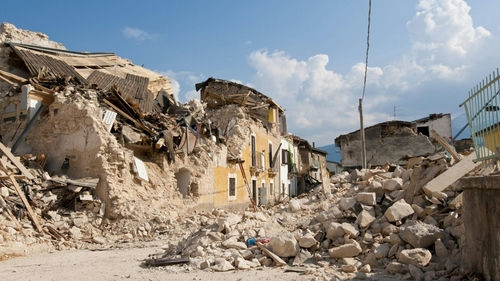When a massive earthquake rocks Russia, the ripple effect is felt across nations, sending waves of panic from America to Japan.
At a Glance
- A magnitude 8.8 earthquake struck Russia’s Kamchatka Peninsula on July 30, 2025.
- Triggered a Pacific-wide tsunami, affecting multiple countries including the U.S. and Japan.
- Tsunami alerts led to widespread panic and evacuations.
- Historical seismic activity in the region foreshadowed the event.
Massive Earthquake Triggers Global Panic
On July 30, 2025, the earth shook with a magnitude 8.8 earthquake off the eastern coast of Russia’s Kamchatka Peninsula. This seismic event, one of the strongest since 2011, sent shockwaves not just through the ground, but across international waters, creating a Pacific-wide tsunami alert. This wasn’t just a local disaster; it was an event with global ramifications that included panic and precautionary measures spanning continents.
The quake’s epicenter, located about 84 miles east-southeast of Petropavlovsk-Kamchatsky, unleashed tsunami waves that measured up to 15 feet in Russia. As the waves began their ominous journey, countries like Japan, the U.S., and others along the Pacific rim braced for impact. The U.S. West Coast and Hawaii found themselves scrambling to issue warnings and prepare for potential disaster.
Historical Precedence and Preparedness
Kamchatka’s geography places it on the notorious Pacific “Ring of Fire,” a hotbed for seismic activity. With a history marked by major earthquakes, the region had been experiencing heightened seismic activity, including notable foreshocks leading up to the main event. These were not mere tremors but precursors that hinted at the impending disaster.
In the days and hours leading up to this earthquake, the region had seen a magnitude 7.4 foreshock, signaling the potential for something far more significant. Such events underscore the importance of preparedness, and while the scale of the earthquake was immense, the readiness of international tsunami warning systems was put to the test.
International Response and Coordination
The international response showcased the necessity of coordinated efforts. The Russian government, alongside regional authorities in Kamchatka, took charge of emergency response and evacuation procedures. Meanwhile, agencies like the Japan Meteorological Agency and the U.S. National Weather Service were instrumental in issuing timely alerts. Their warnings were crucial in mitigating the disaster’s potential impact.
This event tested the mettle of disaster preparedness on a global scale. It highlighted the value of international cooperation in the face of natural calamities that know no borders. While some regions experienced moderate damage, the effectiveness of the response efforts in minimizing loss of life was commendable.
Implications for the Future
The Kamchatka earthquake serves as a stark reminder of our planet’s volatile nature and the importance of vigilance. The immediate aftermath saw significant disruptions in transportation and local economies in affected areas. The long-term implications will likely involve rebuilding efforts and a renewed focus on enhancing infrastructure resilience.
Moreover, the economic, social, and political impacts of such events are profound. They challenge governments and highlight the need for robust disaster management strategies. This earthquake, while devastating, also serves as a lesson in preparedness and the need for continued investment in early warning systems and public education.

